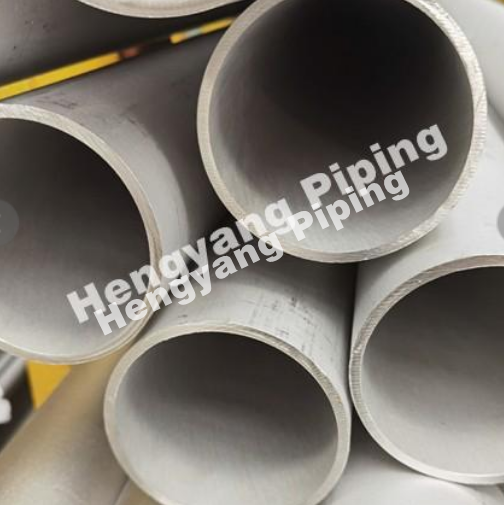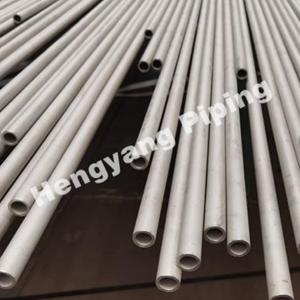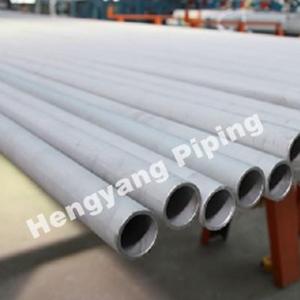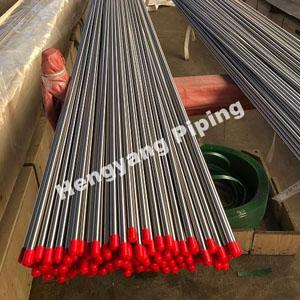How Is Austenitic Stainless Steel Made?
Austenitic stainless steel is one of the most widely used types of stainless steel, known for its excellent corrosion resistance, high ductility, and ability to withstand extreme temperatures. It is widely used in various industries, including construction, automotive, food processing, and medical equipment manufacturing. The production of austenitic stainless steel involves a series of carefully controlled processes to achieve the desired properties and composition. In this article, we will explore the steps involved in making austenitic stainless steel pipe.
1. Raw Materials:
The first step in the production of austenitic stainless steel is to gather the necessary raw materials. The primary components of stainless steel are iron, chromium, nickel, and small amounts of other elements like carbon, manganese, and nitrogen. The quality and purity of these raw materials play a crucial role in determining the final properties of the stainless steel.
2. Melting Process:
Once the raw materials are gathered, they are melted together in an electric arc furnace or an induction furnace. The melting process ensures thorough mixing of the elements to achieve the desired chemical composition of the stainless steel. The furnace is lined with refractory materials to withstand the high temperatures involved in the melting process.
3. Refining:
After the melting process, the stainless steel is subjected to refining to remove impurities and excess gases. One common method of refining is argon oxygen decarburization (AOD), where oxygen and argon gases are blown into the molten steel. The oxygen reacts with carbon and other impurities, forming oxides that rise to the surface and are removed. The addition of argon helps to stir and homogenize the steel, improving its quality.
4. Composition Adjustment:
During the refining process, the chemical composition of the stainless steel may be adjusted to meet specific requirements. For austenitic stainless steel, the addition of chromium and nickel is crucial. Chromium provides the steel with its corrosion resistance, while nickel enhances its ductility and toughness. The proportion of these elements can be tailored to achieve the desired properties.
5. Continuous Casting:
Once the refining and composition adjustment are complete, the molten stainless steel is cast into solid forms using a continuous casting process. In this method, the liquid steel is poured into a water-cooled mold, which solidifies the steel into a continuous strand or slab. Continuous casting allows for efficient production and consistent quality.
6. Hot Rolling:
The solidified stainless steel strand or slab is then hot rolled into intermediate shapes, such as plates, sheets, or coils. Hot rolling involves passing the steel through a series of rolling mills at high temperatures, which reduces its thickness and shapes it according to the desired dimensions.
7. Annealing:
After hot rolling, the austenitic stainless steel may undergo annealing to improve its mechanical properties. Annealing is a heat treatment process in which the steel is heated to a specific temperature and then slowly cooled. This process relieves internal stresses, increases ductility, and improves the steel's formability.
8. Cold Rolling:
For certain applications, such as precision engineering or specific surface finishes, the annealed stainless steel may undergo cold rolling. Cold rolling involves passing the steel through a series of rollers at room temperature to further reduce its thickness and improve its surface finish.
9. Descaling and Pickling:
During the hot rolling and annealing processes, the stainless steel may develop scale and oxide layers on its surface. Descaling and pickling are methods used to remove these impurities. Descaling involves blasting the steel with high-pressure water jets or mechanical descalers. Pickling involves immersing the steel in an acid bath to dissolve the surface oxides.
10. Final Finishing:
After descaling and pickling, the stainless steel is given its final surface finish. This can range from a polished and mirror-like finish to a dull, brushed appearance, depending on the intended application.
11. Quality Control and Testing:
Throughout the production process, strict quality control measures are implemented to ensure that the austenitic stainless steel meets the required specifications. Various non-destructive and destructive tests are conducted to check for defects, ensure chemical composition, and verify mechanical properties.
12. Final Product:
The finished austenitic stainless steel is now ready for use in various applications. It is often sold in various forms, such as sheets, plates, coils, bars, and tubes, depending on the intended use.
Conclusion
The production of austenitic stainless steel involves a sophisticated and carefully controlled series of processes, from sourcing high-quality raw materials to the final product's inspection and packaging. The unique properties of austenitic stainless steel, such as corrosion resistance and ductility, make it a vital material in numerous industries, ensuring the durability and reliability of various products and structures. The continuous advancement in manufacturing technologies and material science continues to enhance the performance and versatility of austenitic stainless steel, expanding its range of applications even further.
If you want to know more information about Austenitic Stainless Steel, please contact us. We will provide professional answers.






